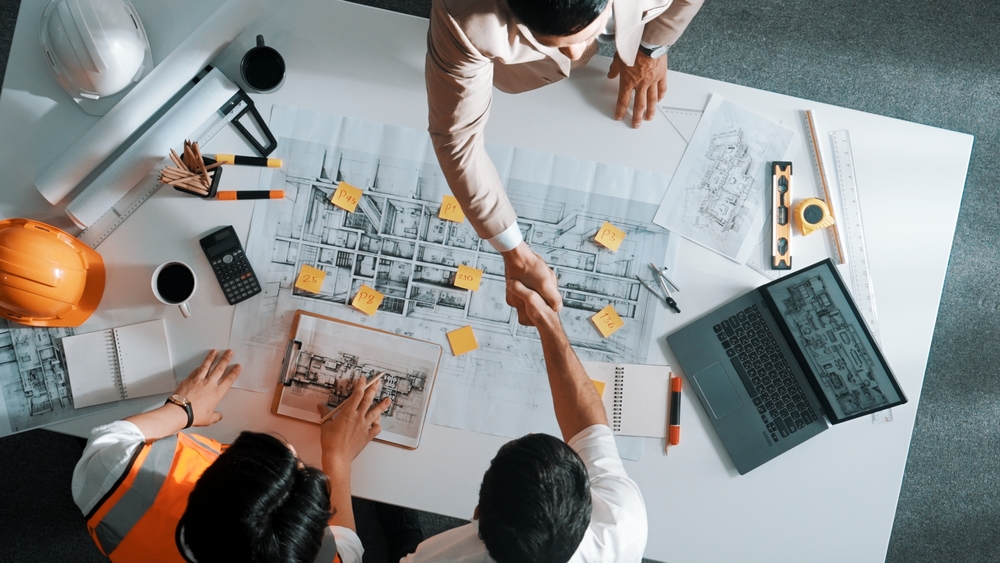Balancing Quality and Cost in Construction Project Management
Balancing Quality and Cost in Construction Project Management

Cost in Construction Project Management
Balancing quality and cost is one of the most critical challenges in construction project management. Striking the right balance ensures that projects are completed within budget while meeting necessary quality standards. Too much focus on cost can compromise the quality of the work, while prioritizing quality over cost can lead to budget overruns.
We’ll explore how to effectively balance quality and cost in construction project management and achieve optimal results.
The Importance of Balancing Quality and Cost
When managing a construction project, both quality and cost are non-negotiable aspects. Cost efficiency is necessary to maintain profitability and avoid budget overruns, while quality is essential for long-term sustainability, reputation, and client satisfaction. Achieving the right balance requires careful planning, communication, and decision-making.
Key Strategies for Balancing Quality and Cost
1. Accurate Budgeting and Cost Estimation
Cost estimation is the first step in balancing quality and cost. Inaccurate cost estimates can lead to unnecessary spending, compromising project quality or requiring mid-project cuts to stay within budget.
By using detailed cost estimation techniques—factoring in labor, materials, overheads, and contingencies—project managers can establish a clear baseline for costs while ensuring that the necessary quality standards are achievable within the given budget.
2. Select the Right Materials
Choosing the right materials is crucial for maintaining both quality and cost control. Opting for premium materials when they are not necessary can drive up costs, but using substandard materials can compromise the project’s integrity.
To balance these factors, focus on materials that offer long-term durability and value. Negotiating with suppliers or buying in bulk can also reduce material costs while maintaining high-quality standards.
3. Implement Value Engineering
Value engineering is a systematic approach to improving the value of a project by analyzing its components. This process aims to achieve the required quality levels while lowering costs by finding more efficient construction methods, design alternatives, or material substitutions without compromising performance or durability.
By evaluating design and material options, value engineering allows you to deliver high-quality results without exceeding the budget.
4. Effective Contractor and Vendor Management
The quality of workmanship plays a significant role in the overall quality of the project. Hiring skilled contractors and vendors is key to maintaining high-quality standards, but it also comes at a cost.
To manage this, project managers should vet contractors carefully and negotiate favorable terms while ensuring that the required quality is met. Building strong relationships with trusted contractors and vendors allows for more flexible pricing and ensures consistent quality delivery over time.
5. Monitoring and Quality Control
Regular monitoring of the project’s progress ensures that quality standards are met and costs are kept under control. Conducting frequent quality checks, site inspections, and ensuring that the work adheres to design specifications will help avoid costly rework or delays.
Quality control systems help in catching potential issues early, allowing for timely adjustments without additional costs.
The Role of Communication in Balancing Quality and Cost
Open and transparent communication between stakeholders, including clients, contractors, suppliers, and project teams, is essential. Clear communication helps in managing expectations around both quality and cost, preventing misunderstandings that could lead to compromises on either front.
When issues related to quality or cost arise, prompt discussions with stakeholders allow for quick decisions and changes without affecting the overall project’s success. Establishing regular communication channels, such as progress meetings and reports, helps ensure that both cost and quality remain balanced throughout the project lifecycle.

Common Challenges in Balancing Quality and Cost
1. Scope Creep
Scope creep occurs when project requirements expand beyond the original plan. While these changes may enhance the project’s quality, they can also drive up costs. Project managers must manage scope changes carefully and ensure that additional work is budgeted and agreed upon by all stakeholders.
2. Unforeseen Issues
Unexpected problems, such as design flaws or environmental factors, can cause costs to rise. A robust contingency plan helps mitigate the financial impact of unforeseen issues while maintaining quality standards.
3. Budget Overruns
If a project is not carefully monitored, it’s easy for costs to spiral out of control. To prevent this, establish regular budget reviews and make necessary adjustments early to prevent larger issues down the line.
Conclusion
Balancing quality and cost in construction project management requires a combination of careful planning, value engineering, effective communication, and ongoing monitoring. By focusing on accurate budgeting, material selection, and contractor management, project managers can deliver high-quality construction projects without exceeding budget constraints. Remember, it’s not about sacrificing one for the other—it’s about finding the right balance to deliver successful projects.
For more expert tips on construction project management, contact us.
External Resources for Legal Guidance
Mistakes in Construction Project Management
Read more related articles to enhance your knowledge and make informed decisions
10 Essential Steps in the Building Construction Process
How to Choose the Right Materials for Your Construction Project








